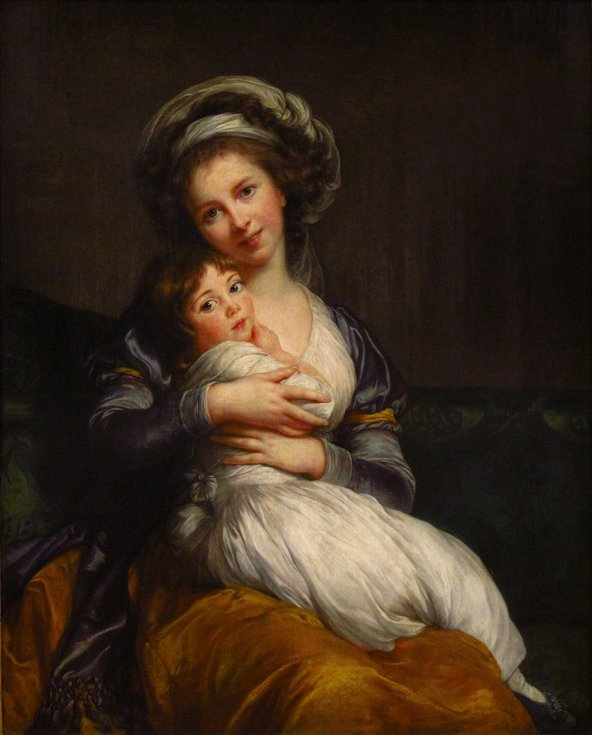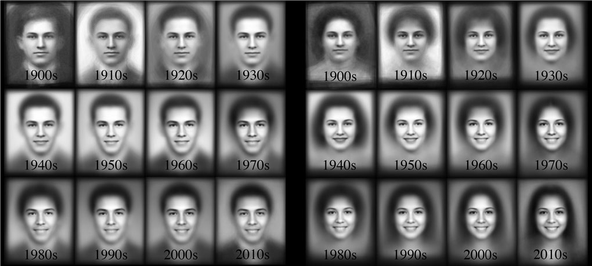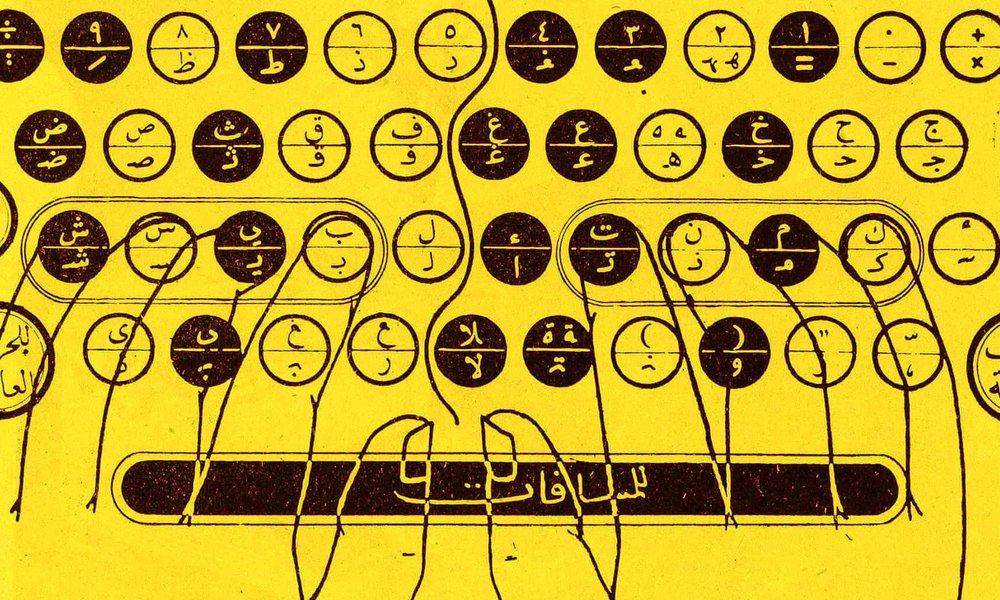Smiling is one of the most frequent and easy to recognise facial expressions. In psychological theory about emotional expressions, it is often contended that smiling has a biological basis and is a relatively unambiguous expression of positive emotions, such as amusement or enjoyment. In research on facial expressions of emotion, smiles are usually the expressions that are best recognised. You would therefore be forgiven for thinking that the relationship between smiling and positive emotion is stable across time and space. Dig a little deeper, however, and this turns out to be more complicated.

"What Fun We Had!" – Your Prints by Kodak Limited. Image credit: Mike via Flickr (CC BY-SA 2.0)
Smiles innately linked to amusement and enjoyment
Where do human smiles come from? It is widely assumed that smiling is rooted in our evolutionary past and that there are similarities between human smiles and the silent bared teeth displays seen in primates. But human smiles signal amusement and enjoyment, whereas primate smiles – at least in many species – are believed to signal submission or appeasement, so although there are some homologies in surface appearance, underlying facial musculature and even neuroanatomy, the similarities do not extend – at least in a simple way – to function.
The idea that smiles are innately linked to the experience of amusement or enjoyment, and are therefore invariant across human cultures, is supported by evidence that congenitally blind children and adults smile in circumstances and in ways that are similar (but not identical) to their sighted counterparts. So there appears to be an innate basis for a facial movement that resembles a smile. What does vary between the blind and the sighted, and therefore seems to depend on visual interaction, is the voluntary, ‘social’ smile.
Smiles as social signals
The fact that humans can control most of their facial expressions, including smiling, adds considerable complexity to the relationship between smiling and emotion. Faces are highly salient social stimuli and facial expressions are used to send and receive social signals. Smiles are rewarding for those who receive them and therefore shape their perceptions of and behaviour towards those who send them. As a result, there is much more variability in smiling across time and place than a narrowly biological view of emotion might suggest.
One manifestation of this variability is reflected in studies of smiling in paintings. Portraits of men and women typically depict them with a serious, unsmiling expression. The ‘smile’ of Leonardo’s Mona Lisa is an exception, although the fame of the painting arises partly from the ambiguity of the expression. In any case, her smile is not one that shows her teeth. Colin Jones FBA’s study of smiling in French 18th-century paintings charts how the depiction of a smile showing teeth emerged between 1700 and the 1780s.

Self-portrait of Madame Vigée-Le Brun with her Daughter, Julie. Madame Vigée Le Brun’s open-mouthed smile became a characteristic of her portraits after causing initial outrage in 1787.
He argues that the absence of such smiles in earlier portraiture stemmed partly from the tooth rot caused by sugar and poor diet, and partly from the aristocratic perception that smiling and laughter were manifestations of a lack of self-control and an absence of good manners. For example, in Jean-Baptiste de La Salle’s Rules of Decorum and Christian Civility, published in 1703, the author advised readers to avoid ‘indecorous’ displays of emotion, such as smiling and laughing. Jones attributes the emergence of paintings showing smiles with teeth to the development of dentistry and to the rise of a culture of sensibility, which was more concerned with authenticity and egalitarian social relations than with rules of social decorum.
Capturing the smile in art and photography

Average images of high school seniors by decade showing the evolving facial expressions throughout the 20th century. Image credit: Shiry Ginosar and colleagues from A Century of Portraits: A Visual Historical Record of American High School Yearbooks.
Similar studies have been made of the history of smiling in photographs. In a recent study of nearly 38,000 yearbook photographs taken between 1905 and 2013, Shiry Ginosar and colleagues showed that the breadth of smiles increased steadily until the 1950s, when it became the norm to smile for such photographs. As with the changes in portrait painting, these changes can be explained in terms of material factors and social conventions. The material explanation relates to the lengthy exposure times that were needed in early photography, necessitating the maintenance of a pose for seconds.

Colour poster produced for Kodak Ltd, showing the 'Kodak Girl' standing on a beach, holding a small camera and case. Image credit: Science & Society Picture Library / Getty Images.
The social conventional explanation is one proposed by the historian Christina Kotchemidova, who has argued that Kodak, the major player in the rapidly expanding photographic market, sought through their advertising to associate photography with happy occasions like holidays and travel, making the smile the obvious expression to be shown in a snapshot.
The influence of culture on smiling
The relatively recent phenomenon of smiling in portraits can be attributed at least in part to cultural norms, but these vary from country to country. Studies have shown that the same person is likely to be judged by others as less intelligent when smiling than when not smiling in certain cultures. Variation is also evident in studies of the amount of smiling in different cultures. Jeffrey Girard and Daniel McDuff analysed the facial responses of more than 850,000 people from 31 countries as they viewed television advertisements. They found that people smiled more when they were from countries that are high in individualism and low in population density. However, the strongest predictor of smiling was ‘historical heterogeneity’: an index of a country’s record of immigration diversity over time. The explanation for the link between expressiveness and historical heterogeneity is one that has been proposed by Paula Niedenthal and her colleagues. In countries with a long tradition of diverse immigration (such as Brazil and the United States), people shared neither a language nor social norms but nevertheless had to get along with each other. The absence of shared norms and language made it more difficult to anticipate how others would act or react, but this lack of predictability could be reduced by making one’s feelings and intentions explicit through one’s nonverbal displays. Smiling is a way to indicate that one is a trustworthy and reliable social partner.
Despite the widespread assumption that human smiling is biologically based and therefore likely to be invariant over space and time, these examples show that it is in fact quite variable. Turning points in social practices over time, such as the emergence of dentistry in 18th-century France, the rise of the advertising industry in 20th-century America, changes in social norms regarding the appropriateness of emotional displays and changes in immigration have all contributed to observable differences in how and when we smile.
Antony Manstead is Emeritus Professor of Psychology at Cardiff University. He was elected a Fellow of the British Academy in 2011.


